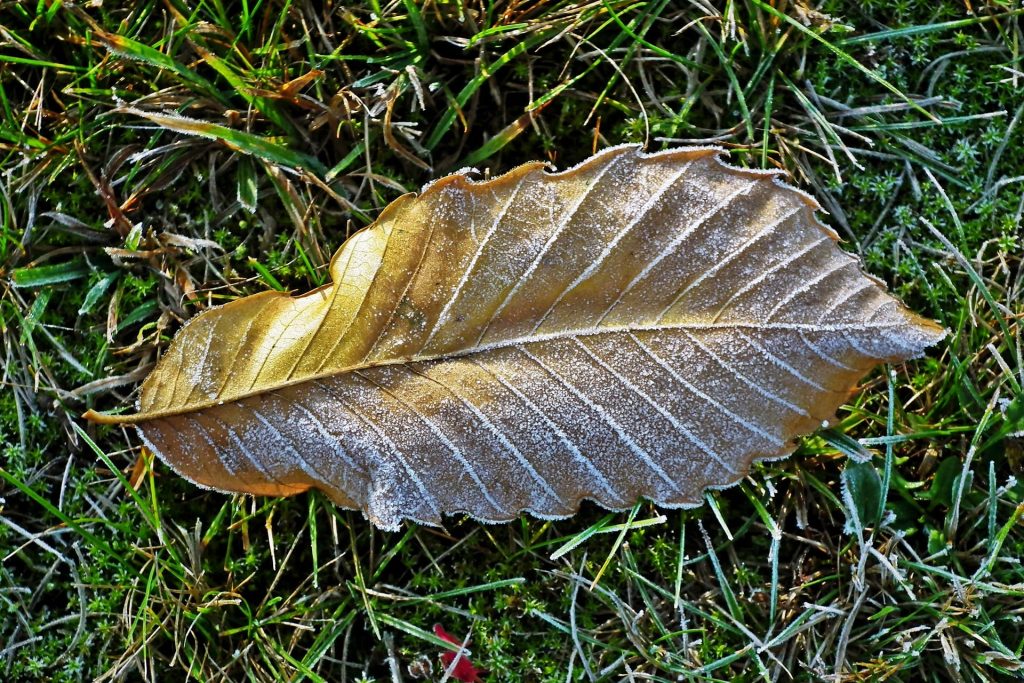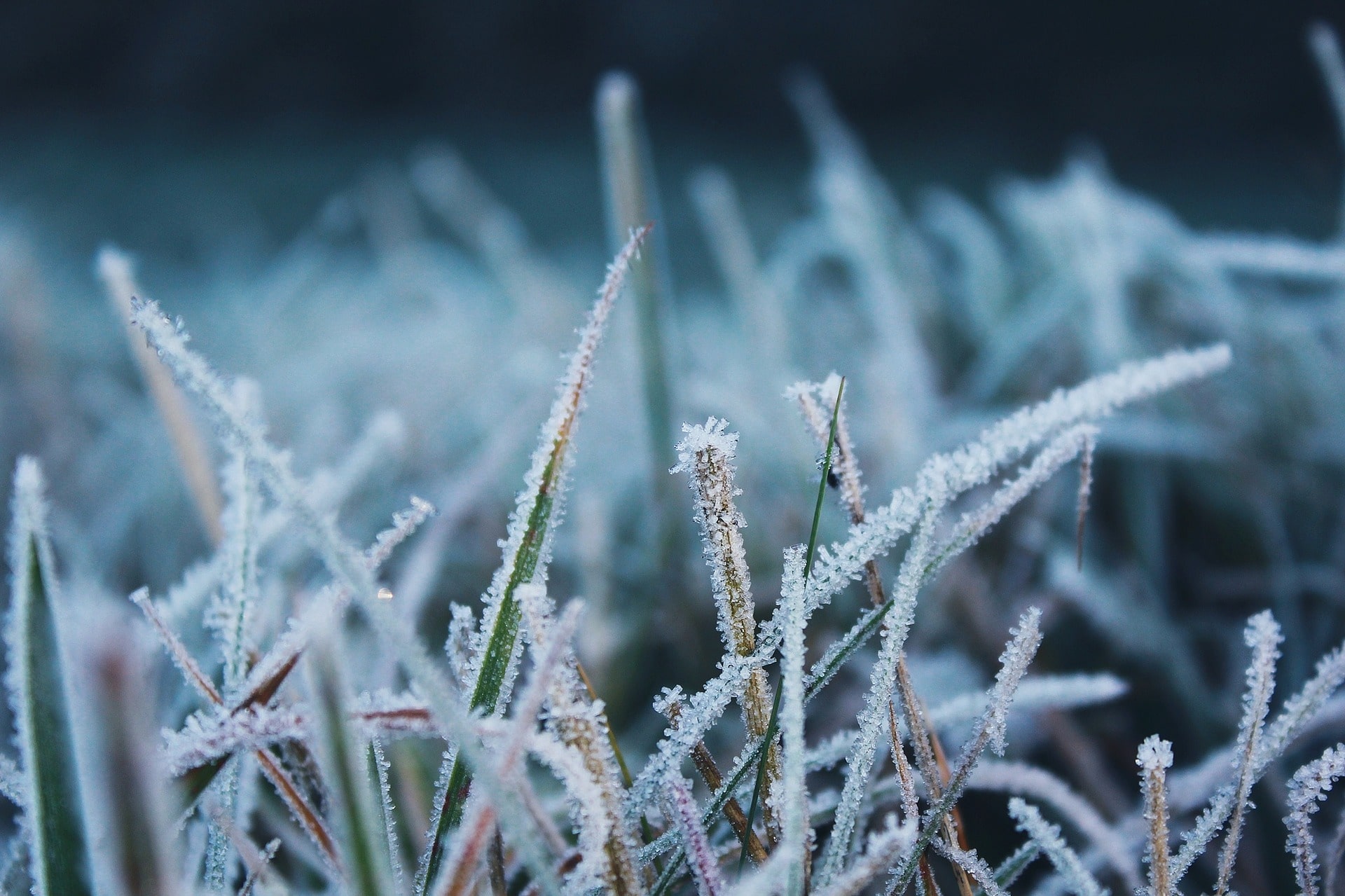In the UK, your grass is very likely to stop growing in the winter. When the weather gets cold, your grass becomes dormant, helping it to see through the winter months.
Here’s what you need to know about caring for your lawn in winter in the UK.
When does grass stop growing?

Grass stops growing when the soil temperature reaches 5 °C. When the soil gets this cold, your grass becomes dormant, and enters a sort of hibernation mode until the weather warms up again.
Remember, your grass needs sunlight, moisture, and nutrients in order to grow. The optimal soil temperature for grass growth is between 18 – 24 °C – below 18 degrees it slows down, and below 5 degrees, growth can stop completely. While a lack of moisture and nutrients can kill grass, cool season grasses like we get in the UK can survive extreme cold for months on end.
It’s important to note that your air and soil temperature aren’t always directly correlated. Over time, the ground will absorb and release heat/cold, and this can occur quite gradually. This means that if you’ve had a week of freezing conditions and then it warms up, the ground temperature may be a lot lower than the air temperature.
Grass will also stop growing and begin to die when the air and soil temperature tops 30-35 °C, depending on the type of grass, however this isn’t something you typically need to worry about in the UK.
Does grass actually stop growing, or does it just slow down a lot?
While grass may appear to stop growing in winter, it’s actually likely that your grass is continuing to grow at very slow speeds.
Healthy perennial grasses, such as red fescue, will likely grow a small but noticeable amount during the winter months. On the other hand, annual grass varieties such as annual ryegrass will stop growing completely during the winter. They will die and need to be reseeded.
The colder the weather, the less your grass will grow. If you live up North for example, you are unlikely to notice any grass growth at all during December and January, with only a bit of growth during late October and early November.
When should you stop cutting your grass in the UK?

It’s generally best to stop mowing your grass at the start of winter in the UK, even if growth is slow, because it can cause problems. For example:
- If there’s ground frost, your grass will be more brittle than normal, and mowing can damage your grass.
- If the grass is wet, you will find mowing difficult.
- Snow will make lawn mowing pretty much impossible.
The only exception to this would be if you live in a milder part of the UK, and are noticing considerable grass growth. In this case, you can give your lawn a quick mow, choosing a mild, dry day to get the job done. Don’t cut the grass too short, as it won’t be able to regrow as easily as it would in the warmer months.
How to care for your lawn in winter

Most cool season grasses do a pretty good job staying dormant in winter, and will rebound nicely in the spring. Therefore, you can take a break from your lawn care activities in the winter.
One thing you can do is avoid giving your grass too much foot traffic during winter. Using your lawn when the weather is cold can damage the root system, and the grass won’t be able to heal until the spring. Don’t disturb your lawn while it’s sleeping! Instead, let your grass rest as much as possible.
Also, make sure to clear debris such as fallen leaves away from your lawn in winter as soon as possible. This is for the same reason as minimising foot traffic – your lawn is more delicate in cold temperatures, and isn’t able to do as good a job composting organic matter as it would when the weather is warmer.
It’s also important to do a good job preparing your lawn for the winter, when the grass stops growing completely.
- Keep an eye on the weather in autumn, and try to mow for the last time before it begins to get frosty. Don’t cut it too short, and try not to take too much off – you want to do multiple smaller cuts in the weeks and months prior to the first frost. Just before temperatures drop at the end of the year, you want your lawn to be about 2 inches tall. Any shorter and your grass may get stressed out when it gets extremely cold weather.
- In the early/mid autumn, you want to begin preparing your grass for the lower temperatures by making it as healthy as possible. You want to try and address weed outbreaks, use fertiliser, reseed bare patches, and aerate your lawn if you need to (typically once a year for clay soils, less often for regular soils). The healthier your lawn is going into the winter, and the deeper its root system, the healthier it’ll be as you enter spring.
- Prior to the winter, you also want to address any drainage issues, so that you don’t have to deal with waterlogging when it begins raining. If you need to take measures such as installing a French drain, you want to do this before the weather gets too cold.

I’m Josh, and I’m the head writer at Lawn Care Pro.
I love everything lawns, but I’m a bit of a lawn mower nerd. I spend a lot of my free time tinkering with mowers, and planning my mowing schedule for the next few weeks.
I’m also into cars, which comes in very helpful when servicing a mower engine!

